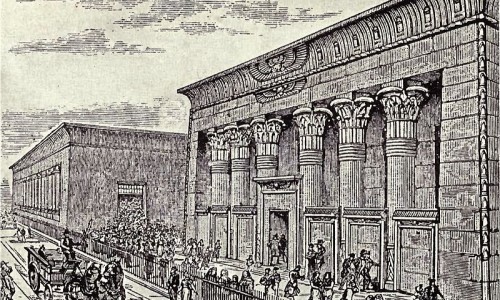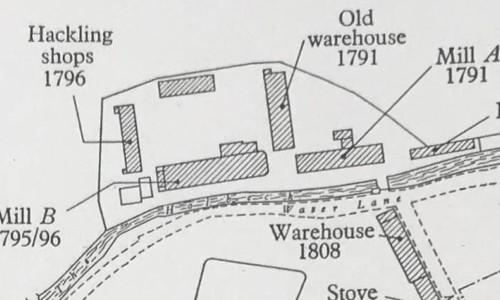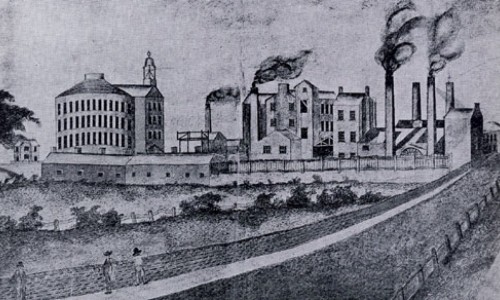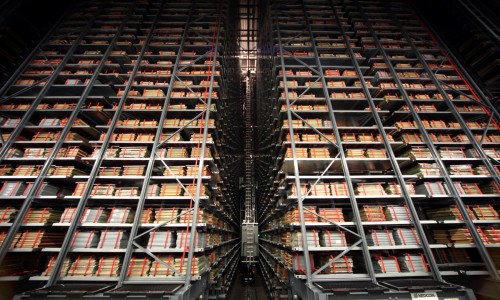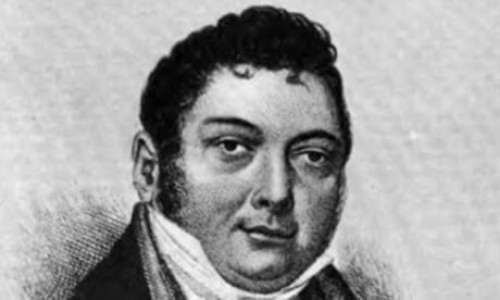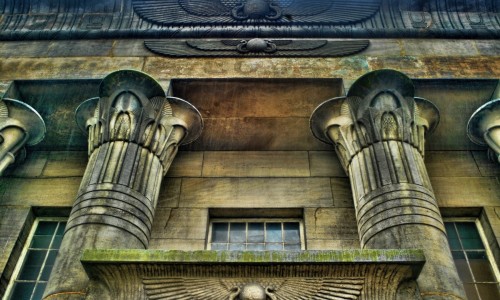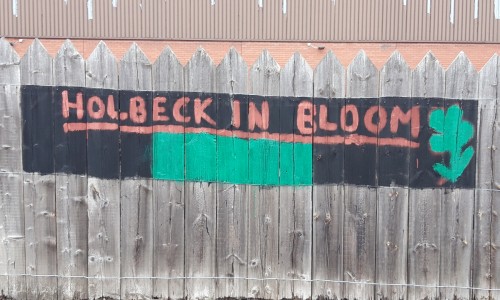Respect Overdue: how Matthew Murray changed the world and why nobody knows it
September 13, 2019
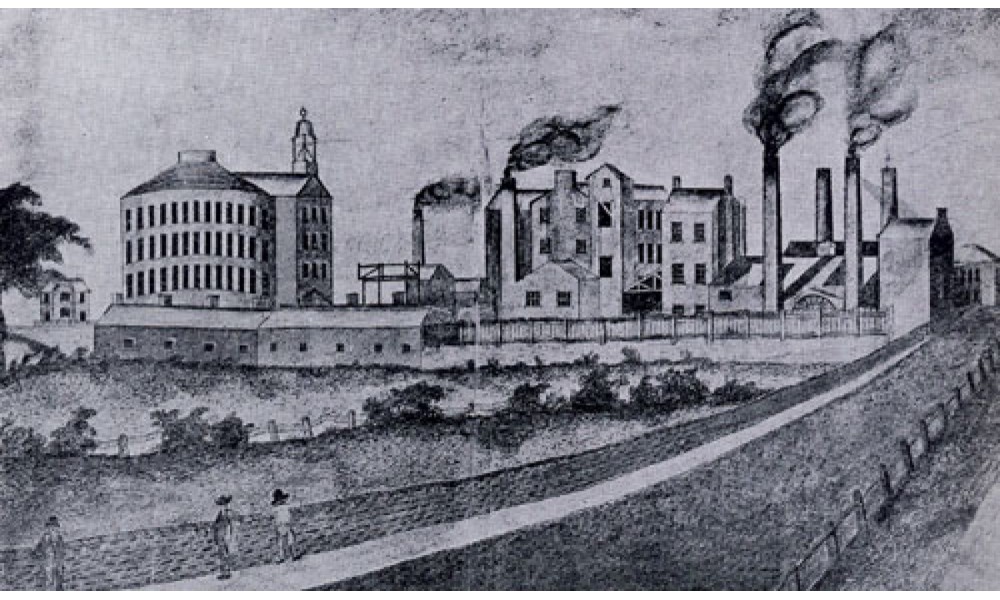
This is the story of Matthew Murray; a man of unquenchable energy, influence and ideas, but also a man of principle and virtue, and while these latter qualities should allow a person to prosper and build a formidable legacy, in Murray’s case they strangled his ambitions and severely hampered how he is recalled.
What are the chances of two of the UK’s most important industrialists and business minds finding each other in North Leeds in the late 18th century? And what are the chances of them uprooting and relocating to a sleepy, non-descript hamlet called Holbeck and finding their respective fortunes? Pretty remote you would say, and yet it happened.
It is often said that two heads are better than one, but when each of those heads belongs to forthright and ambitious people with an insatiable hunger for knowledge, progress and achievement, far from creating an unbreakable unity of strength, you will often find that the two work better individually. That was the case with John Marshall and Matthew Murray; indispensable to each other’s success, but far from an inseparable force. They had to go their own way and they both prospered because of it, but if John Marshall’s legacy extends beyond Holbeck and Leeds and onto a world stage, where he dominated global markets in yarn manufacture for many years, Matthew Murray’s name should be remembered similarly in the realms of engineering and steam power innovation, and yet it isn’t.
Today, Murray’s name is barely whispered outside of Holbeck, the area he helped to make famous, where his name has been carried on schools and street signs and tunnels and buildings, and where his grave still sits proudly and prominently. Nor is he spoken about in the general media or by historians as the highly influential industrialist and engineer that he definitely was. Murray is the big achiever who didn’t get the recognition, but when you are scorned and undervalued and your story has lapsed, Holbeck won’t forget you. It will just celebrate you more, and as one of its own.
There were two industrial heavyweights in Holbeck’s game-changing 19th century evolution, and while John Marshall’s story is well known and rightly revered, Murray’s is tarnished by a self-effacing humility and a naivety that valued society’s developmental needs far greater than his own individual triumph, and any competitive edge that he may have needed to achieve it. And at a time when society was developing far faster than at any other time in human existence, that Murray took this stance was honourable beyond measure, and merits a much wider recognition.
Born in Newcastle-Upon-Tyne in 1765, Murray became an apprentice millwright at the age of 14. He married Mary Thompson in Durham whilst he was still an apprentice, and with a clear life plan already sketched out, he began to learn his trade. Murray was based in Stockton-On-Tees but became a ‘journeyman’ mechanic. This meant he toured around local towns mastering his craft and was paid by the day for his work. The term journeyman came from the French word for day: ‘la journée’.

(Matthew Murray)
Through his journeyman work, Murray found himself in nearby Darlington, and heard about the work John Marshall was doing in Leeds. Murray was temporarily stationed at Kendrew and Porthouse, an engineering group who had patented a rudimentary flax spinning machine. He heard how John Marshall had visited the works and sought permission to copy the Darlington machinery, and how he had returned to Leeds and set up a mill to work on the system.
Murray felt somewhat stunted by a lack of ambition in the north east, and was impressed by Marshall’s initiative and dynamism. He knew he had more talent than was currently being utilised and in June 1788, at the age of just 23, he took it upon himself to seek out this enticing figure called John Marshall. He waved goodbye to his wife and walked more than 70 miles to Leeds on foot, and on his own, saying to Mary that she could follow him down when he had the money to pay for them both to live. He arrived at the Bay Horse Inn in Chapeltown but didn’t have enough money to pay for a room, telling the landlord that he was about to start making money by finding a job. The next day, he carried on walking to Adel and eventually found Marshall’s Scotland Mill.
Marshall had partnered with Samuel Fenton – a junior partner in the family drapery business – and an investor called Ralph Dearlove. They had spent six months working on improving the Darlington machinery, but were struggling to make significant progress. Murray introduced himself and immediately proved useful to the labouring trio. He quickly became chief mechanic for the embryonic business and began to develop specialist spinning machinery to spin flax into linen yarn.
With the first £20 he earned from Marshall, Murray sent for his wife Mary and they set up home in a small cottage in Adel. In total, it took John Marshall three years to find a way to mass-produce yarn from flax, with Murray tinkering with and refining the Darlington machinery beyond all recognition, so much so, that in 1790 he was able to patent the flax-spinning machinery as his own invention.
But adapting the machinery to enable largescale production was still a problem, and Marshall realised he had to move to bigger premises. In May 1790 he paid William Naylor £600 for an acre of freehold land on Water Lane and soon after terminated the lease on Scotland Mill. Within two months the four-storey Mill A was erected, and yet Murray was still working to perfect the machinery to realise Marshall’s dream.
Murray had followed Marshall to Holbeck and was put in charge of building and installing the machines he was still in the process of designing. But production was soon ramped up and with many wheels set in motion by Murray’s ingenuity, his stock had risen and his ambitions had been triggered. Marshall had new partners and new investors and he was going places. He had also initiated the arrival of several other mills in the area, a once barren patch of uncultivated land served by the Hol Beck and the Leeds Liverpool Canal, but now a burgeoning industrial hotspot with an infectious energy for anyone looking to make money and make a mark.

(A plaque on display at the Round Foundry complex in Holbeck today)
While Marshall wanted Murray along for the ride – and persuaded him to take out a second patent on amendments to his spinning frame in 1793 - it quickly became apparent that Murray wanted to go in his own direction and was far too headstrong and driven to play second fiddle to Marshall, and to merely facilitate his whims. Murray had a vision all of his own, and it would revolutionise the engineering industry worldwide.
In 1795 Murray left Marshall’s employment and set up his own business with David Wood. They rented buildings at Mill Green on the outskirts of Holbeck towards Wortley (roughly where the bridge takes you over the Ingram Distributor from Gelderd Road near Dunelm Mills today). Two years later they were joined by James Fenton, a wealthy colliery owner and the son of Samuel Fenton, one of Marshall’s original partners in Adel.
David Wood looked after the day-to-day running of the business, while Fenton was the company’s accountant. Murray concentrated on production, getting orders and developing his interest in steam engine design.
At this time, steam engines were monstrous constructions usually incorporated into the exterior design of mill buildings. Murray’s genius was in designing a far more compact, and therefore, practical and versatile engine which proved to be a major step forward in engineering terms. He also developed various improvements to associated machinery which streamlined the operation of steam engines. This allowed the trio’s business to thrive in a major way, whilst still supplying machinery to the many flax spinning mills in the local area, including John Marshall’s rapidly-growing empire.
Murray’s 1793 patent included a spinning machine that introduced the new technique of wet-spinning, a process that would some years later revolutionise the flax industry. He would also make improvements to the laborious ‘heckling’ process, which effectively saved the industry. The flax trade was on the point of dying as spinners were struggling to produce yard for sufficient profit. Murray’s ideas reduced the cost of production and improved the quality; giving foundation to the UK trade, and not least to his former mentor Marshall.
The 18th century turned into the 19th century and Holbeck, Leeds was the place to be. It was the undisputed axis of industrial Britain and a magnetising draw to people with foresight, inspirations and vitality. And John Marshall was about to make an important strategic advancement for both himself and Matthew Murray. A further five acres of land south of Water Lane was purchased and two acres were rented and later sold to Fenton/Murray/Wood. This would become the Round Foundry.
While the Round Foundry development would come to define Murray’s legacy as a dynamic and pioneering engineer, a fractious relationship that would severely restrict the level of prestige and acknowledgement that Murray now enjoys had already begun.
Boulton & Watt were an established engineering firm based in Birmingham and are widely credited for the steam engine developments that had the biggest impact on the industrial revolution. Matthew Boulton and James Watt had many years on Matthew Murray in terms of age and experience, but were hugely concerned by the advanced work going on in Leeds. Watt was about to retire, but his sons were still firmly in the business, and while his legacy was ensured – he was an accomplished inventor in various fields and even has a unit of power named after him – Murray’s skills and ideas worried the company.
The first contact between Murray and Boulton & Watt was in 1799 at Mill Green. Two representatives of the Birmingham firm visited Murray’s works and were made very welcome. Murray, perhaps naively, was open and honest about his work and let the duo copy ideas, processes and designs. For their part, the Boulton & Watt representatives were candidly impressed by forging and casting techniques they reported back as being far superior to their own.
By return, Boulton & Watt agreed to Murray making a reciprocal visit to their Soho Foundry in the Midlands, but when he turned up Murray was refused admission. A secret jealousy and a raging fear had developed as Boulton & Watt distracted themselves – in some ways disproportionately - with the younger engineer from Leeds.
The festering, and somewhat one-sided, rivalry escalated when Murray’s business took the bold step to develop the land Marshall had offered them on Water Lane. In 1802 Fenton, Murray and Wood moved into what would become the Round Foundry, the world’s first integrated engineering works; combining manufacture and assembly on one site. Murray brought together the processes of metal casting, component preparation, fitting-up and testing under the control of one organisation, and thus revolutionised the engineering industry. He made wheels, joints, bars, bearers, frames, shafts, blocks, coupling boxes and, of course, engines.
Boulton & Watt were seething at the sheer audacity. The collection of buildings included the Green Sand Foundry and the Dry Sand Foundry, which stood adjacent to what is now the Midnight Bell pub, all of which still exist amongst the seven listed buildings still standing in the Round Foundry complex today.

(The Midnight Bell pub at 101 Water Lane with the taller buildings either side being Murray's Green Sand Foundry on the left and the Dry Sand Foundry on the right)

(A plaque on display at the Round Foundry complex in Holbeck today)
Included in the complex was an 1802-built inn which was created to supply employees at the works and in surrounding mills with well-earned refreshments. That inn survived until the 1980s but has been refurbished and re-opened in the new millennium as the Cross Keys pub. Upstairs, the inn had rooms for rent and Boulton & Watt took one of these rooms for over three months and housed various employees dispatched on spying missions. They befriended workers from the Round Foundry over drinks downstairs and took ideas, methods and general tittle tattle to feed back to Birmingham. They tried to re-employ workers who had defected to join Murray’s firm and when they refused, accused them of taking drawings from Boulton & Watt and attempted to take police action against them.
The strongest and most determined step that Boulton & Watt took in attempting to restrict Murray’s rapid expansion was to buy adjacent buildings for no real purpose, other than to physically prevent Murray’s business getting any bigger. It was an obsession fed on paranoia and jealousy, and from their covert position Boulton & Watt’s spies were able to watch Murray’s every move. They even made detailed drawings of his works in order to mimic what expansion they could make on their own premises, and to calculate what additional land and buildings they would have to buy to restrict Murray further.

(The Cross Keys pub today, in those upstairs rooms Boulton & Watt carried out their industrial espionage on Murray's activities)
It was a state of madness that had consumed Boulton & Watt and inevitably, it ended in the courts with several of Murray’s patents for engine designs and modifications being challenged. Boulton & Watt accused Murray of taking their ideas, when it was plainly the opposite. At the time, it was commonplace to apply for a number of patents together in one hearing in order to save costs. Boulton & Watt challenged several that Murray was proceeding with and consequently had them all thrown out. Murray attempted to fight the challenge to his patents but eventually gave up.
All Murray’s patents were invalidated and it is believed Boulton & Watt consequently took on many of Murray’s ideas and successfully patented them as their own. Murray was typically philosophical, believing it was acceptable for inventors and pioneers to take each other’s ideas if that eventually led to necessary advancements in technology. “What people want from us is good engines” he would say, and undoubtedly they got them. The consequence was that Murray was never hailed as the forerunning creative genius he indisputably was, but as an extraneous bit part in a bigger story he should have played the lead role in.
Upstairs at the Cross Keys today you can see a framed portrait of James Watt and use a function room named in his honour, perhaps only a minor hat tip to a great inventor, given Watt has also appeared on the £50 note, but something of a slight to Matthew Murray in the circumstances of the chicanery and industrial espionage that has hamstrung the body of work of a man who did so much for Holbeck. And one day we should also talk about the statue of James Watt in City Square.
Characteristically, Murray wasn’t flustered or distracted by such setbacks, and spurred on by the competition he continued his work, exporting engines to Europe and the US. In 1804 he built his own house on land close to the Round Foundry, which was to be the first property in Leeds to use steam-filled radiators to heat it. Murray pioneered the use of steam for central heating and the home, officially titled Holbeck Lodge, took on the nickname ‘Steam Hall’. The house was so close to the Round Foundry – located in the middle of what was known as the ‘Railway Triangle’ off Water Lane – that it could use the steam created from the works’ boilers, generated within the huge 100 foot diameter three-storey Rotunda, which gave the Round Foundry its name.
Later sketches show Murray’s home was further away from the complex, and indeed too far to have made use of the works’ boilers, so he perhaps had to move as the works expanded, but nevertheless, Steam Hall survived until the 1950s when someone, somewhere made the decision to demolish it, despite its clear historical interest.

(The Salamanca depicted in a bench at Murray's graveside at St Matthew's Church, Holbeck)
Murray’s work with steam engines was all leading up to his most famous creation, however. He had built several stationary steam engines, but in 1812 he built the ‘Salamanca’, the first of four he made for the Middleton Railway, and the first commercially successful twin-cylinder steam locomotive. It was named in honour of the British victory in the ‘Battle of Salamanca’ in Spain, and its success was in part due to the shortage of horse and feed as a result of the Napoleonic wars.
There were wide-scale problems with transportation of goods due to the war, and Middleton colliery manager John Blenkinsop had patented the idea of using a rack and pinion railway, but needed a workable steam engine to power it and produce a more efficient means of transport than the traditional horse and cart. Previous steam engines were, in effect, little more than those used as novelty fairground rides, but Murray developed a far superior engine to use in conjunction with Blenkinsop’s system.
In June 1812, Murray’s engine was successfully applied to the haulage of freight trains carrying around 90 tonnes of coal from Middleton into Leeds. Thousands of people watched the first journey, which went without a hitch and continued to do so, thus making coal production cheaper and boosting the local business. On Tyneside looking on, was George Stephenson, who saw Murray’s locomotives in action and was adamant he could improve on them, but struggled to do so. Inspired by and modelled on Murray’s ‘Willington’ locomotive – one of the four made for Middleton - 13 years later Stephenson produced the first locomotive to carry passengers on a public line, with his son Robert. Alas, as the inventor of the world’s first commercial locomotive, Murray’s achievements are often overlooked by mainstream media, and the narrative centres on Stephenson for the public locomotive on the Stockton and Darlington line that came much later.
Murray later worked to develop steam engines for boats in order to supply the navy, but this never took off on a great scale. He was also one of the first engineers to use gas lighting to enable longer working hours, and this was adopted by the corporation for use as early street lighting, with Fenton, Murray and Wood designing and erecting the first gas street lighting scheme in Leeds.
On the home front, Murray had one son – Matthew Murray Junior – who was born in 1793 and was an apprentice at the Round Foundry and eventually established a works in Moscow in 1821. Murray also had three daughters. The eldest, Margaret, married Richard Jackson, who became a partner in Murray’s firm when founding partner David Wood died in 1820. The business became Fenton, Murray and Jackson.
Under the new name, largescale locomotive manufacture continued, with engines supplied to several different railway companies throughout the UK. Many respected engineers also passed through the company on their way to great things, such as Benjamin Hick and Charles Todd, and essentially, the business maintained Leeds as a renowned centre for engineering and machine tool manufacture, which was internationally acknowledged for its skills and workmanship.

(Matthew Murray's grave is marked by this stone and an iron obelisk at St Matthew's Church, Holbeck)
Murray died in 1826, aged 60, but the business carried on in his name, even continuing to supply Marshall’s Mills until 1836. Many of Murray’s working engines long outlived him and one installed at a locomotive repair shop in King’s Cross is said to have run for over a century. Technology eventually caught up with the business though and some new developments didn’t work out as they had hoped and Fenton, Murray and Jackson was declared bankrupt in 1843.
Several different firms would use the scattered buildings within the Round Foundry complex in the following years, although some would remain unoccupied for decades at a time. Smith, Beacock and Tannett took over most of the complex to manufacture machinery and renamed it the Victoria Foundry. Under their stewardship two workers were killed and three seriously injured when a boiler exploded, and in 1875 the famous circular Rotunda burnt down.
The Rotunda contained a centrally mounted steam engine which powered all the machines in the other buildings, but its iconic design contributed to its sad demise. The circular shape of the building restricted access for fire crews, whose hosepipes became twisted in the spiral staircase and so couldn’t get full water power to douse the flames. So sadly, while most of the original buildings still remain in 2019, the distinctive Rotunda which gave the Round Foundry its name perished.
Business continued in various guises, with the Round Foundry making armaments for both the First and Second World Wars, before the complex closed for good in 1953 and lay abandoned before the new Millennium regeneration dutifully restored the famous buildings, and rightly celebrated the founder and the precious work that went on there.
Today the Round Foundry complex and the area that surrounds it, is a collection of some of the most progressive and creative organisations in Leeds, and while they might be challenging in new media and digital technologies rather than steam power and machine engineering, the area is a fitting tribute to a long-standing ethic of discovery and trailblazing in Holbeck. With the restoration of Temple Works and the Holbeck development being spear-headed by CEG, the area is poised to nurture more start-ups, fast-growing scale-ups and established creative firms - today’s and tomorrow’s innovators and entrepreneurs are gathering where yesterday’s once stood tall.
Matthew Murray is buried at the nearby St Matthew’s Church, with a striking iron obelisk marking his grave as part of a fitting and prominent remembrance of an adopted son of Holbeck. He might be referenced as a benevolent originator who passed up the chance to be remembered for all time alongside the world’s greatest innovators, but in Leeds, Murray’s legacy is sacrosanct. And as a city that fiercely honours its own and is happy maintaining the truth within its own walls, such eternal blessing is enough.
(Lead image is an artist's impression of the Round Foundry complex first established in 1802)

.jpg&w=500&h=300)
